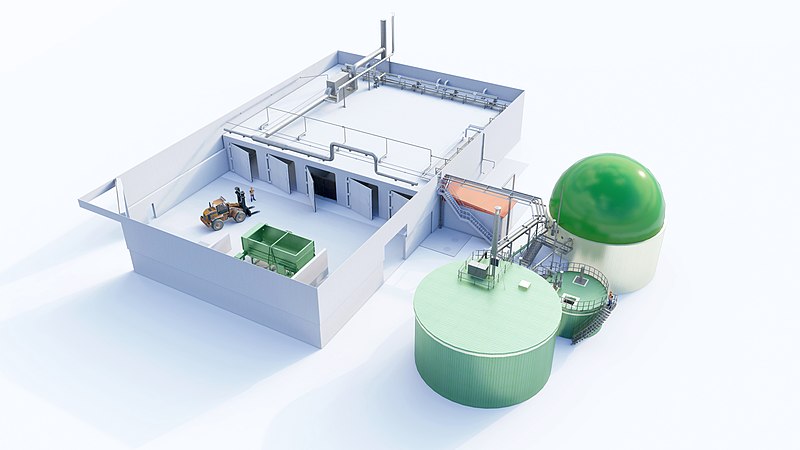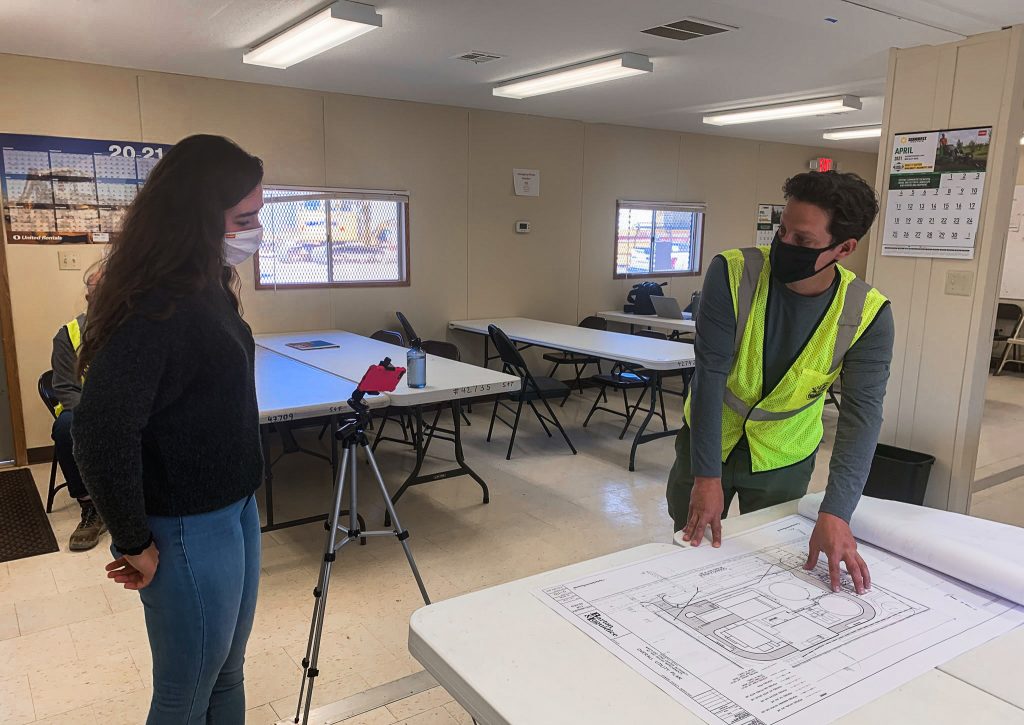Anaerobic Digestion:
Fermenting Waste to Create Energy
About Me

Hi! My name is Paula Gonzalez Alvarez and I am a senior at Walt Whitman High School as well as an Environmental Leader at Bethesda Green. I am passionate about the environment and I love learning about the fascinating technologies that are contributing towards a greener future. That’s why I chose to do my spring conservation project on learning more about anaerobic digestion and sharing what I learned with others. I hope you enjoy!
What is Anaerobic Digestion?
Anaerobic digestion (AD) is a series of biological processes in which micro-organisms digest plant and/or animal material in sealed containers, producing biogas, which is a mixture of methane, carbon dioxide, and other gases. The organic material left over, known as digestate, is rich in organic matter and nutrients such as nitrogen, phosphate, and potash.

Advantages of Anaerobic Digestion
- Anaerobic digestion is a sustainable means of managing a variety of organic wastes by recycling it into valuable products instead of landfilling or incinerating
- It is a closed air process, so there are no fugitive emissions
- It needs a lot less space than other alternatives, making it easy for the site to fit in where the waste is coming from (in more urban areas)
- Can be used to recycle oils and fats, which cannot be done almost any other way
- Anaerobic digestion facilities produce digestate, an organic soil amendment with multiple horticultural beneficial uses. Soils amended with digestate absorb and retain more water, reducing the effects of drought and stormwater
- The biomethane that is generated at an anaerobic digestion facility can replace natural gas
- Anaerobic digestion facilities are important suppliers of renewable energy, aiding our transition from fossil fuels and making resilient, self-reliant businesses, campuses, and communities
- Using digestate in landscapes sequesters carbon into soil, thus removing carbon dioxide from our atmosphere and making anaerobic digestion carbon negative
- It is one of the best solutions to recycle liquid organic waste of any type that are difficult to recycle elsewhere
Disadvantages of Anaerobic Digestion
- It is not effective for smaller scale community/at home projects
- Needs a lot more resources to start up, including time, money, engineers, and a development company
- It does not do well with woody waste (organic waste comprised of yard waste, tree trimmings… )
Fuel for Anaerobic Digestion
- There are four types of waste that can go into an anaerobic digester and these are:
- Liquid organic waste
- This includes fats, oils, greases, and sewage sludge
- Clean organic waste
- This includes food scraps and animal manure
- Packaged food waste
- This includes industrial organic residuals and packaged organic waste
- Pallet Garden Crops
- This includes organic waste put in pallets
- Liquid organic waste
Products of Anaerobic Digestion
- Out of the anaerobic digestion process come biogas, digestate, and water
- Biogas is mostly methane and carbon dioxide. The biogas yields from anaerobic digestion can be as high as 3,200 standard cubic feet (scf), 90.6 m3, methane per ton of raw food waste. The one in Jessup, MD, is expected to produce 295,000 mmBTU/year. This biogas has multiple uses including power engines, producing mechanical power, heat and/or electricity; fuel boilers and furnaces, heating digesters and other spaces; run alternative-fuel vehicles; supply homes and business through the natural gas pipeline…
- There are different business models for what to do with the biogas depending on where it is being created. Usually in Europe there is enough economical incentive to use the biogas to generate electricity that can be sold to the grid. Unfortunately, in the United States the government incentive for renewable electricity isn’t there yet so it makes more economical sense to keep the biogas as gas to put it in the gas pipeline system.
- Digestate is a wet mixture which is rich in nutrients and can be used as fertilizer for crops. In the United States there is not a market for the liquid soil treatments, so the digestate is usually separated into a solid and a liquid. The liquid is taken through the wastewater treatment process so that the final product is grey water, which doesn’t contaminate. Then the solid can be mixed with soil to make topsoil, be used to make bedding for livestock, for flower pots, as a soil amendment, and as a fertilizer.
*Grey water: The relatively clean waste water from baths, sinks, washing machines, and other kitchen appliances.
Interviews with Experts
 Melissa Pennington — Sustainability Coordinator, EPA Region 3 Philadelphia. Melissa assembled and leads the Core Anaerobic Digestion (AD) Technical Team. The nature of this team demonstrates EPA’s desire to break down silos and to develop consistent AD policy. Team projects include: a white paper on the basics of AD, an ongoing data collection project, and development of EPA’s AD website.
Melissa Pennington — Sustainability Coordinator, EPA Region 3 Philadelphia. Melissa assembled and leads the Core Anaerobic Digestion (AD) Technical Team. The nature of this team demonstrates EPA’s desire to break down silos and to develop consistent AD policy. Team projects include: a white paper on the basics of AD, an ongoing data collection project, and development of EPA’s AD website.
Click here to read the transcript: Interview with Melissa Pennington
 Ana Muñoz Gonzalez — Research scientist and teacher, specialized in Environmental Microbiology with more than five years of postdoctoral experience in biodiversity studies, biodegradation processes, enzymatic optimization and molecular biology.
Ana Muñoz Gonzalez — Research scientist and teacher, specialized in Environmental Microbiology with more than five years of postdoctoral experience in biodiversity studies, biodegradation processes, enzymatic optimization and molecular biology.
Anaerobic Digestion in Montgomery County
 There are no anaerobic digesters in Montgomery County, only one in Maryland, and just a few in the entirety of the DMV area (DC, Maryland, and Virginia).
There are no anaerobic digesters in Montgomery County, only one in Maryland, and just a few in the entirety of the DMV area (DC, Maryland, and Virginia).
The closest one to Montgomery County is the Maryland Food Center Authority in Jessup Maryland, which can recycle around 120,000 tons of organic waste per year in only 6 acres of land, just under the 160,000 tons of organic waste that Montgomery County produces annually!
If we made anaerobic digestion more widespread, we could not only get most of our organic waste out of landfills, but we could also generate large amounts of biogas and digestate which have many uses without being harmful to the environment.
Site Visit
Fun with Anaerobic Digestion
Here are two fun anaerobic digestion brain puzzles for you to enjoy!

